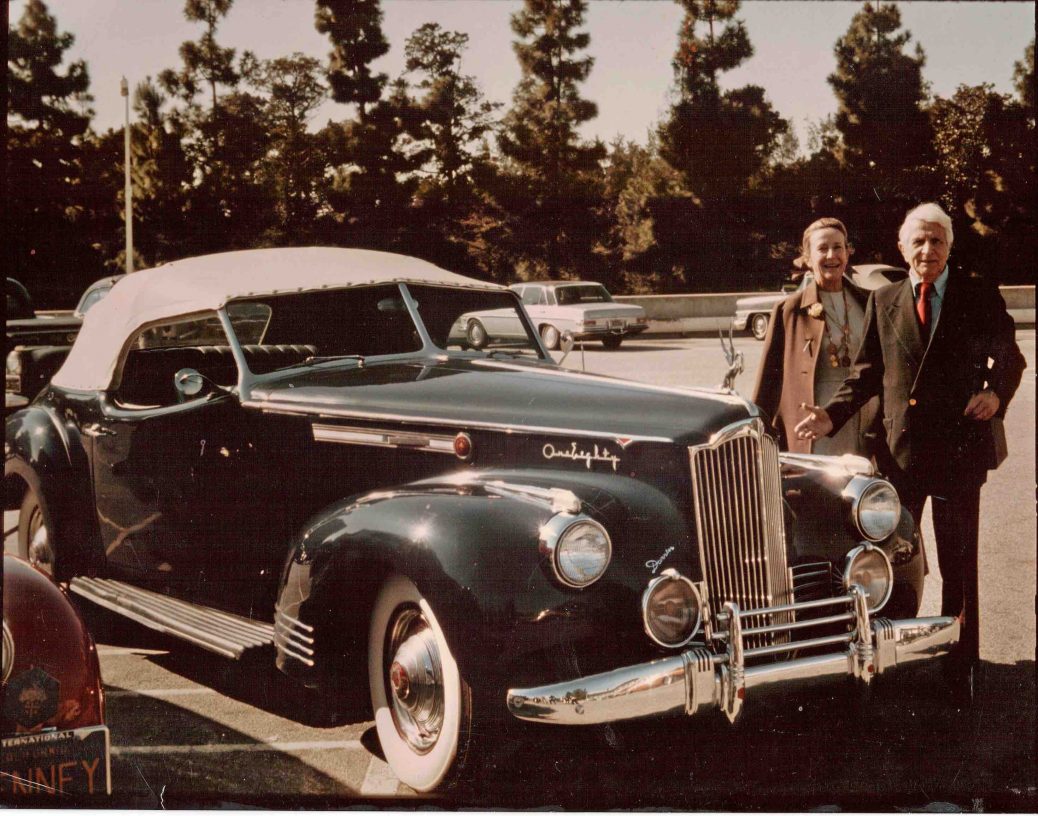
The Packard Adventures of Howard A. “Dutch” Darrin, Part 2
A chance meting with Darryl Zanuck brought Darrin back to America—at exactly the right time. The custom coachbuilding business was waning, semi-customs were in, and Packard needed a new body style. Continued from Part 1…
Part 2
Excerpt: For full text and illustrations and a roster of Packard Darrins, see The Automobile, May 2017.
Darrin frequently hobnobbed with the Good and the Great. One day in 1934, at the Paris Polo Club, a club director approached: “There’s an American out on the playground with a horse and polo mallet; please see if you can help him.” Dutch went out and met film producer Darryl Zanuck—who invited him to Hollywood. Lady Luck had struck again.
Ever the showman, Darrin arrived in Hollywood flying a de Havilland Puss Moth he’d shipped over from Europe, plastered with the legends “Paris,” “London,” “New York,” “South Bend”—even though he’d not flown transatlantic. “Everyone knew it was a gag,” Dutch recalled, “but it was all fun…. To be entertained by Darryl Zanuck was an experience I will never forget, and probably the reason I decided to return to America in 1937. The polo in California was pretty good, too.”
Identifying himself as “Darrin of Paris,” and deploying a French accent whenever he felt the need to impress, Darrin got right to work. His first project was a two-seater sport convertible on a Ford chassis, for Welsh cricket star Percy Morgan; then a Packard convertible with cutaway doors and a long hood, for actor Dick Powell. Soon he hired two gifted craftsmen, Paul Erdos and Rudi Stoessel; they rented a large building on Sunset Strip, and began “prodifying” cars for Hollywood society.
The Darrin Packards
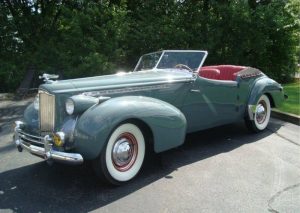
The age of full-custom bodies was waning. Dutch decided to build “semi-custom” Packards, which were relatively inexpensive yet distinct. Packard’s classic styling and “parthenon” grille were the right starting points. He sold the first Packard Darrin to actor Dick Powell in late 1937. Dutch learned a great deal from the car, which had too much body flex and suffered from nigh-uncontrollable water leaks. Rudi Stoessel sealed the leaks and fitted a cast aluminum cowl to cope with the flex problem.
Despite Stoessel’s fix, controversy continues over the Packard Darrin’s structural rigidity. Pierre de Beaumont, a Packard engineer, said the company had to produce kits to improve the frontal strength, since Dutch had removed the radiator cradle to lower the grille. But there is no doubt that they were spectacular looking cars, certainly among the most exotic of the semi-customs.
Production Darrins
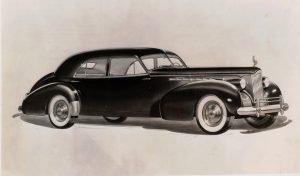
They built about 20 Packard Darrins in 1938-39. A keen reception convinced Packard to offer regular production models in 1940. Dutch built these at the idle Auburn plant in Connersville, Indiana. Packard Chairman Alvan Macauley insisted he use the Super Eight chassis for prestige and profit, though Connersville did turn out a few One Twentys. The catalogued models were a convertible victoria, four-door convertible and four-door sport sedan.
Production for 1940 comprised five four-door convertibles and forty victorias. For 1941-42, 50 more victorias were built by Sayers & Scoville in Cincinnati before World War II shut down production. In all, Dutch built about 150 Packard Darrins. Nothing became him as those glamorous cars, sleek and low-slung, sans running boards and brightwork. At one time or another Clark Gable, Carole Lombard, Ann Sheridan, Gary Cooper and Errol Flynn owned one.
Darrin’s Clipper
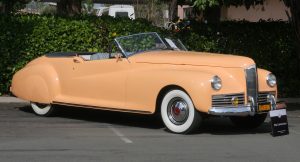
Nineteen forty brought a chance to design for mass production: the Packard Clipper. Packard wanted a new, modern body. Dutch produced a dramatic clay model. Briggs Body Company had the production contract, and Alex Tremulis, then with Briggs, accompanied chief designer John Tjaarda to see it. Tremulis told this writer:
I won the guessing game by saying it had all the fingerprints of Dutch. There was the downward-swept beltline and blind quarter, with a notchback roof flowing into an elegantly swept rear end, with a front fender flow that washed itself out on the front door at the characteristic angle.
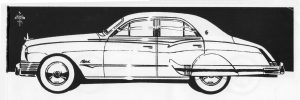
Body engineers made some changes, the most serious of which was foreshortening the sweep of the front fenders to wash out on the front doors, which predictably incurred Dutch’s wrath. But there was no doubt that he had successfully translated Packard’s design hallmarks from the upright style of the 1930s to the envelope body. Packard should have kept the original Clipper shape, instead of loading on sheet metal for the “pregnant elephant” cars of 1948-50.
continued in Part 3.






